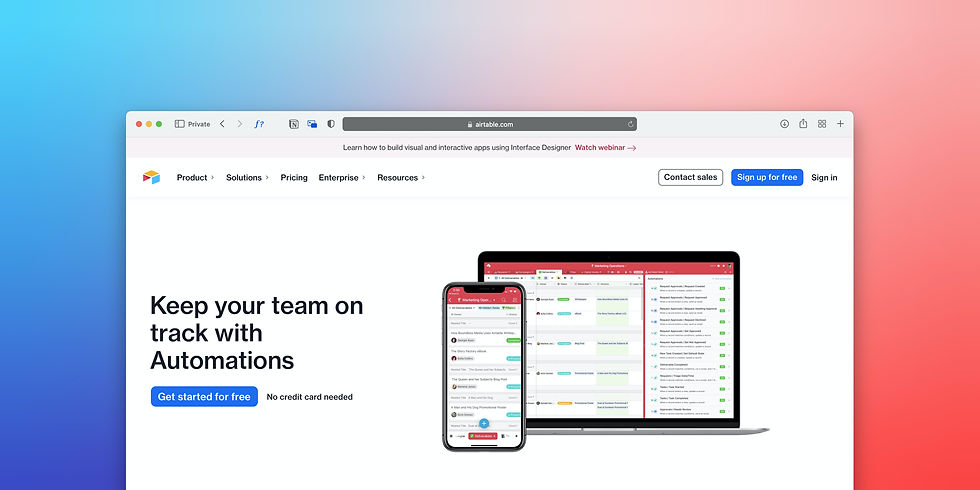Build a Scalable SMB Tech Stack with Open Source (2025)
- Canute Fernandes
- Jul 28
- 3 min read

Introduction: Why Open Source Is the Smart Move for SMBs
In 2025, small businesses can’t afford bloated, over-priced SaaS tools that lock you in and limit control. Open-source software gives you freedom, scalability, and full transparency—with community-backed innovation.
This guide explores how to build a cost-efficient, scalable tech stack using open-source tools—spanning collaboration, CRM, HR, automation, and infrastructure.
🧩 Core Benefits of Open-Source Tech for Small Businesses
✅ No license fees or paywalls
✅ Full data control—host on your servers or choose vendors
✅ Extensive integrations and APIs
✅ Community-driven innovation and peer support
✅ Avoid vendor lock-in or surprise pricing changes
🏗️ Open-Source Stack Blueprint for SMBs
📋 1. ERP & Business Management – Odoo Community Edition
Modules for sales, invoicing, inventory, HR, CRM, and more
Highly customizable and modular
Web-based UI and scalable across departments🔗 odoo.com
💬 2. Internal Team Chat – Mattermost or Rocket.Chat
Self-hosted Slack alternatives
Fully encrypted and team-focused
Integrates with GitHub, Jira, Trello, and CI tools🔗 mattermost.com | rocket.chat
📁 3. Cloud Storage & Collaboration – Nextcloud
Replace Google Drive or Dropbox
File sync, calendars, email, video calls
GDPR-compliant and self-hostable🔗 nextcloud.com
📈 4. CRM – EspoCRM or SuiteCRM
Lead tracking, pipeline management, dashboards
REST API for integrations
Fully open and extendable🔗 espocrm.com | suitecrm.com
🛠️ 5. Automation & Workflows – n8n.io
Drag-and-drop interface for no-code automation
Integrates with 400+ tools (email, apps, databases)
Self-hostable and supports custom scripts🔗 n8n.io
👥 6. HR & Payroll – OrangeHRM (Community Edition)
Employee records, leave tracking, onboarding
Scalable for remote/hybrid teams
Option to upgrade to hosted plan🔗 orangehrm.com
📊 7. Data & Reporting – Metabase
Plug-and-play BI dashboards
Connects to PostgreSQL, MySQL, MongoDB, and more
Business users can build their own queries🔗 metabase.com
🌐 8. Website & CMS – Ghost or Strapi
🔐 9. Password Management & Security – Bitwarden
End-to-end encrypted vault
Shared vaults for teams
Host yourself or use Bitwarden Cloud🔗 bitwarden.com
🧠 Success Strategy: How to Build Your Stack Without Overwhelm
1. Start Small:
Begin with 2–3 tools that solve urgent pain points (e.g., file sharing + CRM)
2. Use Containers:
Deploy using Docker or Kubernetes for scalability and ease of updates
3. Document Internally:
Create SOPs and training for each tool—even if you’re a solo founder
4. Tap the Community:
Use GitHub discussions, Reddit threads, or vendor forums for help
5. Secure Early:
Implement backups, MFA, and role-based access right from the start
📊 Sample Open-Source Stack in Action
Startup: GreenFleet Logistics (10-person ops team)
Pain Points: Slack fees, CRM costs, no automation
Adopted Stack:
Mattermost + Nextcloud
EspoCRM for lead tracking
n8n for email-to-CRM automation
Metabase for weekly reporting
Results:
Cut SaaS costs by 75%
Improved lead response time by 42%
Scaled from 10 to 25 users without additional licensing fees
🔐 Security Considerations for Open Source
Choose tools with active maintenance and large user bases
Use SSL, SSO, RBAC, and MFA where available
Run updates regularly (subscribe to GitHub repo alerts)
Back up databases and configs with snapshot tools
💬 FAQ
Q: Do I need developers to implement open-source tools?
A: Not always. Many tools offer Docker containers or 1-click installers. Some may require light sysadmin knowledge.
Q: Are these tools secure for handling sensitive data?
A: Yes—with proper configuration and encryption. Look for tools with SOC 2, ISO, or GDPR compliance options.
Q: What if I need support?
A: Many open-source tools have paid tiers or partner networks. You can also hire consultants on a per-project basis.




Comments